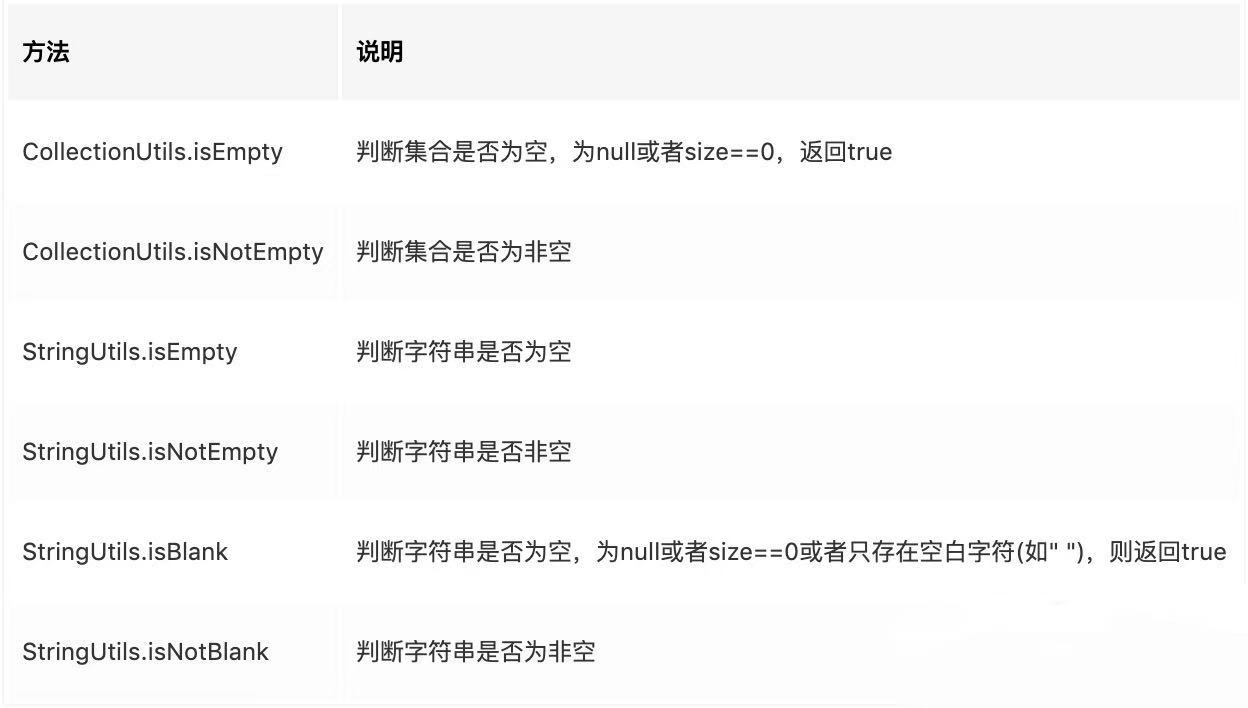Controller层 VS Service层
一般推荐与业务无关的放在Controller层中进行校验,而与业务有关的放在Service层中进行校验。
那么如何将参数校验写的优雅美观呢,如果都是if - else,就感觉代码写的很low
常用校验工具类
使用Hibernate Validate
引入依赖
<dependency>
<groupId>org.hibernate</groupId>
<artifactId>hibernate-validator</artifactId>
<version>4.3.1.Final</version>
</dependency>
常用注解说明

使用方式
需要搭配在Controller中搭配@Validated或@Valid注解一起使用,@Validated和@Valid注解区别不是很大,一般情况下任选一个即可,区别如下:

虽然@Validated比@Valid更加强大,在@Valid之上提供了分组功能和验证排序功能,不过在实际项目中一直没有用到过
Hibernate-validate框架中的注解是需要加在实体中一起使用的
定义一个实体
public class DataSetSaveVO {
//唯一标识符为空
@NotBlank(message = "user uuid is empty")
//用户名称只能是字母和数字
@Pattern(regexp = "^[a-z0-9]+$", message = "user names can only be alphabetic and numeric")
@Length(max = 48, message = "user uuid length over 48 byte")
private String userUuid;
//数据集名称只能是字母和数字
@Pattern(regexp = "^[A-Za-z0-9]+$", message = "data set names can only be letters and Numbers")
//文件名称过长
@Length(max = 48, message = "file name too long")
//文件名称为空
@NotBlank(message = "file name is empty")
private String name;
//数据集描述最多为256字节
@Length(max = 256, message = "data set description length over 256 byte")
//数据集描述为空
@NotBlank(message = "data set description is null")
private String description;
}
说明:message字段为不符合校验规则时抛出的异常信息
Controller层中的方法
@PostMapping
public ResponseVO createDataSet(@Valid @RequestBody DataSetSaveVO dataSetVO) {
return ResponseUtil.success(dataSetService.saveDataSet(dataSetVO));
}
说明:在校验的实体DataSetSaveVO旁边添加@Valid或@Validated注解。
使用commons-lang3
引入依赖
<dependency>
<groupId>org.apache.commons</groupId>
<artifactId>commons-lang3</artifactId>
<version>3.4</version>
</dependency>
常用方法说明

测试代码
//StringUtils.isEmpty
System.out.println(StringUtils.isEmpty("")); //true
System.out.println(StringUtils.isEmpty(" ")); //false
//StringUtils.isNotEmpty
System.out.println(StringUtils.isNotEmpty("")); //false
//StringUtils.isBlank
System.out.println(StringUtils.isBlank("")); //true
System.out.println(StringUtils.isBlank(" ")); //true
//StringUtils.isNotBlank
System.out.println(StringUtils.isNotBlank(" ")); //false
List<Integer> emptyList = new ArrayList<>();
List<Integer> nullList = null;
List<Integer> notEmptyList = new ArrayList<>();
notEmptyList.add(1);
//CollectionUtils.isEmpty
System.out.println(CollectionUtils.isEmpty(emptyList)); //true
System.out.println(CollectionUtils.isEmpty(nullList)); //true
System.out.println(CollectionUtils.isEmpty(notEmptyList)); //false
//CollectionUtils.isNotEmpty
System.out.println(CollectionUtils.isNotEmpty(emptyList)); //false
System.out.println(CollectionUtils.isNotEmpty(nullList)); //false
System.out.println(CollectionUtils.isNotEmpty(notEmptyList)); //true
自定义注解
当上面的方面都无法满足校验的需求以后,可以考虑使用自定义注解。